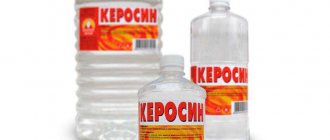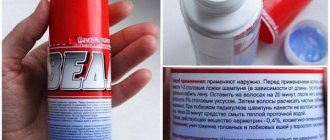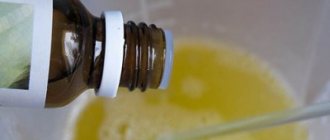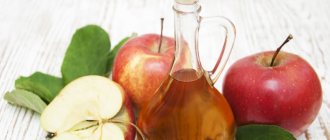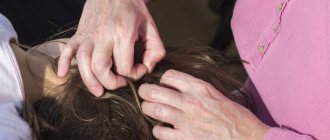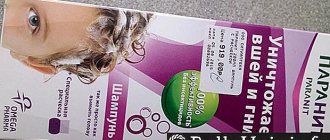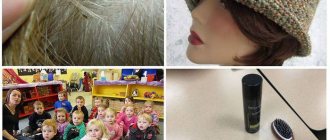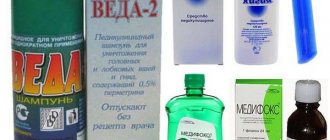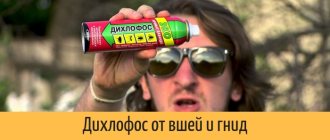It is generally accepted that lice are an infection that was defeated long ago in the civilized world; as a rule, it appears in unsanitary conditions, with a low standard of living and a lack of basic necessities. It is also interesting that many people react extremely sharply to the manifestation of head lice in people close to them, especially in children. This psychological effect is partly justified, given that lice are quickly transmitted from one host to another. Close contact with a person’s belongings or prolonged stay in the same room is enough for there to be a risk of infection.
If lice appear, we recommend that you consult a doctor rather than self-medicate. An infectious disease specialist, dermatologist, mycologist, pediatrician (for children) diagnoses the disease and prescribes treatment.
In fact, this problem, which our grandparents often faced, still exists today. Fighting head lice has become easier these days, given the wide range of drug solutions, but the folk remedies that have been used for many years should not be discounted.
One of the most common methods of getting rid of lice and nits, which are eggs laid by adults, is the use of ordinary acetic acid, which can be found in almost any kitchen and grocery store.
The effect of vinegar on lice and nits
Lice can suddenly appear even in people who observe good hygiene, live in good conditions and their possible contact with people suffering from lice is reduced to zero. Moreover, the appearance of lice is not always noticeable at first, and only when constant itching occurs, redness of the skin is observed, and small wounds appear, a person begins to think about this problem, but, unfortunately, it is already in an advanced stage and requires urgent measures to eliminating the root cause.
Lice are insects of different sexes, so the reproduction process requires at least two individuals of different sexes. In some cases, a female with fertilized eggs may land on the head of a healthy person, the offspring of which will quickly populate the human hairline with parasites.
It is possible to use vinegar in the fight against parasites due to its caustic properties and toxic odor. Vinegar vapors are not able to kill lice or nits, but lice under the influence of the toxin become slow, making them easy to remove mechanically - by combing out with a comb.
Vinegar evaporation has no effect on lice eggs. But at the same time, vinegar easily destroys the fatty and adhesive compounds that attach nits to the hair. This makes it easy to comb out parasites and their offspring even from long hair. Of course, vinegar is not able to completely rid a person of lice in one go, especially considering the long incubation period of nits of 7-10 days, and fairly rapid reproduction. If you skip a few eggs and do not comb your hair with special care, after a couple of weeks you will have to start all over again, so it is important to repeat the vinegar treatment 2-3 times.
Combining vinegar with other lice remedies
It is useful to combine getting rid of lice with vinegar with other remedies for these parasites. It is most effective to use a vinegar solution together with a special lice comb. Vinegar helps loosen the attachment of nits to the hair and renders adult lice unconscious, which makes subsequent use of the comb especially effective.
It is also useful to read: Remedy for lice and nits Para Plus
And one more thing: Lice are not cockroaches, so is it worth removing them with Dichlorvos? (the article has more)
You can buy any of these combs - AntiV, Full Marks, Robi Comb. They are all quite effective.
Review:
“For a long time I was afraid to try vinegar for lice, because I heard about its dangers and did not know how to dilute it. But I definitely didn’t want to get rid of lice with all sorts of chemicals. I walked around for three days and knew about this nasty thing on my head, then I finally decided. It smells, of course, terrible, and your hair is dry and brittle afterwards, but in general, removing lice with vinegar is not a difficult task. I knew that it would not be possible to remove the nits right away, and a week later I repeated the whole process. Everything worked out, I combed my hair with a simple comb, and after the second approach there were no lice left.”
Inna, Vladivostok
You can get rid of lice and nits with vinegar even more effectively if you combine it with hellebore water, wormwood decoction or cranberry juice. This will strengthen the blow to the parasites and weaken them even more.
What kind of vinegar can I use?
Despite the abundance of varieties of vinegar:
- Apple
- Wine
- Dining room
- Alcoholic
They have the same effect in the fight against head lice, the only limitation is that the concentration of vinegar essence should not be more than 9 % . Otherwise, there is a high risk of burning the scalp, which can lead to dermatitis and other skin diseases, in addition to burning and pain. Acetic acid should be used especially carefully to combat lice in children. In addition, different types of vinegar are diluted in different proportions, taking into account their initially different properties. Later in the article we will provide recipes with current proportions.
Recipes and proportions
To achieve maximum effect, acetic acid is applied to the hair in the form of a water solution. To prepare it, simply dilute 9% vinegar with water in the proportion of two parts water for every part vinegar. For example, for 100 ml of vinegar you need to add 200 ml of water . When using high concentration vinegar, it is diluted according to the formula 1 part acid to 16 parts water ( 1:16 ) in order to avoid skin burns. In addition to diluting vinegar with water, there are other effective recipes that can effectively fight lice and have minimal negative effects on hair and scalp health.
With mustard
A tablespoon of dry mustard is diluted in 100 ml of vinegar solution, which is evenly applied to the hair and left for 3 hours, after which it is washed off with warm water. Mustard enhances the effect of the toxic fumes of vinegar, making this method of treatment more effective.
With vegetable oil
Vinegar is diluted with vegetable oil in a 1:1 , and also distributed evenly from the roots to the ends of the hair. A large amount of oil creates an enveloping film that retains vinegar fumes, while the film protects hair and skin from damage, unlike the method of dilution with water. The oil solution must be kept on the hair for up to 8 hours, after which it is washed off with regular shampoo or hair rinse.
With tea tree oil
Tea tree essential oils, like other aromatic oils, are added in a small amount (5-10 drops) to the vinegar-water solution to protect the hair and scalp while killing lice and nits. In addition, the oil has its own strong aroma, which also has a negative effect on adults. The only negative aspect of using this treatment method is the possibility of an allergic reaction in people with individual intolerance.
With egg
Add egg yolks to the vinegar solution. They protect hair from negative influences, preventing split ends and dry hair in general. To prepare an effective remedy, stir 2-3 egg yolks 100 ml of vinegar . To obtain a uniform mass, beat the yolks and gradually add the vinegar solution.
With salt and alcohol
An enhanced effect from vinegar treatment can be obtained by adding table salt and alcohol (you can use vodka) to the solution. Salt and alcohol will enhance the chemical breakdown of vinegar, which will increase its evaporation, and, as a result, the amber. In a glass of vinegar diluted with water, it is enough to add only 40 grams of salt and 5-10 ml of alcohol .
With apple cider vinegar
Compared to table vinegar, apple cider vinegar is less aggressive and can be used to fight lice without fear of damaging your hair. Dilute it with water or oil additives one to one . It is apple cider vinegar that traditional healers recommend using against lice for children and people with hypersensitive skin.
Natural apple cider vinegar prepared at home
will have a particularly gentle effect on the skin
It is possible to defeat parasites!
Antiparasitic Complex® - Reliable and safe removal of parasites in 21 days!
- The composition includes only natural ingredients;
- Does not cause side effects;
- Absolutely safe;
- Protects the liver, heart, lungs, stomach, skin from parasites;
- Removes waste products of parasites from the body.
- Effectively destroys most types of helminths in 21 days.
There is now a preferential program for free packaging. Read expert opinion.
Read further:
How to get rid of nits at home, traditional methods
How to quickly get rid of parasites at home: basic methods, recipes and recommendations
How to get rid of roundworms at home using tablets and folk recipes
Treatment of head lice and nits at home with folk remedies
What lice and nits look like on human hair, in adults and children
How to get rid of pinworms at home for adults and children
Course of treatment and processing rules
Despite the simplicity of the recipes, for a positive effect in the fight against lice and nits using vinegar-based products, you must follow a number of rules:
- The vinegar solution is applied to the hair along the entire length; a minimum volume should reach the scalp, this will protect it from burns, inflammation and itching. In advanced stages of the disease, vinegar is also applied to the scalp, but not by rubbing, but by lightly soaking it to prevent damage to the skin.
- For a neat application, it’s easier to soak a towel or sponge in vinegar and wrap your hair rather than pouring the solution all over your head.
- To enhance the effect, you can wear a disposable cellophane cap, which is sold in cosmetics stores. As a last resort, you can simply tie a plastic bag on the scalp; this will increase the concentration of acetic acid fumes. Using vinegar solutions with oils, which must be kept on the head for 7-8 hours, the plastic cap can be left overnight.
- After soaking, the vinegar is washed off with warm water or a regular shampoo, and the hair is thoroughly combed with a fine-tooth comb. Pharmacies sell special combs for combing out nits and lice, the use of which allows you to achieve excellent results. At a minimum, it is recommended to treat the head with vinegar, followed by combing 2-3 times every 3 days.
How to remove lice with vinegar: instructions for use
For treatment of head lice with vinegar to be effective, it is necessary to use this remedy correctly.
You cannot increase or decrease the concentration of components indicated in the recipe. Because of this, the effectiveness of treatment will decrease, and burns or poisoning are possible.
The procedure is performed as follows:
- With the prepared product (vinegar is always diluted), moisten the strands generously using a dish sponge;
- put on a shower cap to create a greenhouse effect;
- insulate;
- leave for several hours to act;
- comb out with a special comb.
Combing out parasites using a regular fine-tooth comb is useless. Lice are very small and require a special comb to clean them.
Contraindications and dangers
It is best to use vinegar to remove lice from children in a well-ventilated area, since vinegar vapors at a certain concentration can have a negative effect on the mucous membranes of both adults and children. In addition, when using various additional components, you should pay attention to the fact that they can cause allergies if a person is intolerant to the component or its components. This is especially true for aroma oils, the concentration of which is quite high.
Regardless of age, before starting treatment with vinegar, it is necessary to examine the head for scratches, wounds and other damage. Even a slight damage to the skin if vinegar gets into it will cause severe pain, followed by burns and damage to the epithelium.
The strong smell of vinegar is a reminder that people suffering from diseases associated with pulmonary insufficiency should be careful when working with this acid. The acrid vinegar aroma can cause shortness of breath followed by loss of consciousness.
Women during pregnancy and lactation should also approach this type of treatment with caution. Despite the fact that vinegar does not penetrate into the blood, its effect on the fetus and on a breastfed child has not been studied at all.
In any case, if severe pain, itching and other unpleasant symptoms occur, the vinegar should be washed off with plenty of warm water, and then a nourishing mask or lotion used every day should be applied to the hair and scalp.
Features of use
Children are more likely to suffer from head lice because they are in closer contact with others. Substances used for head lice in children are almost no different from those used for adults.
Vinegar for lice in children can also be used. In a small concentration, it can be used to treat even very young children (from 2-3 years old - before there is almost no possibility of infection).
The only peculiarity here is that children's skin is more sensitive, and significant damage can be caused to the hair, which is especially unpleasant for girls. It is necessary to adhere to several basic rules to avoid unpleasant consequences of treatment.
- Vinegar should be used in a weaker solution , it is better to repeat the procedure later.
- Do not use vinegar essence under any circumstances. You can correctly calculate the ratio of water and acid, but such a risk is not worth it.
- When washing your hair, use a special bandage to prevent liquid from getting into your child's eyes. Rinse your hair several times.
- After treating head lice with vinegar, use chamomile decoction . This plant has a calming effect on inflammation and reduces irritation.
